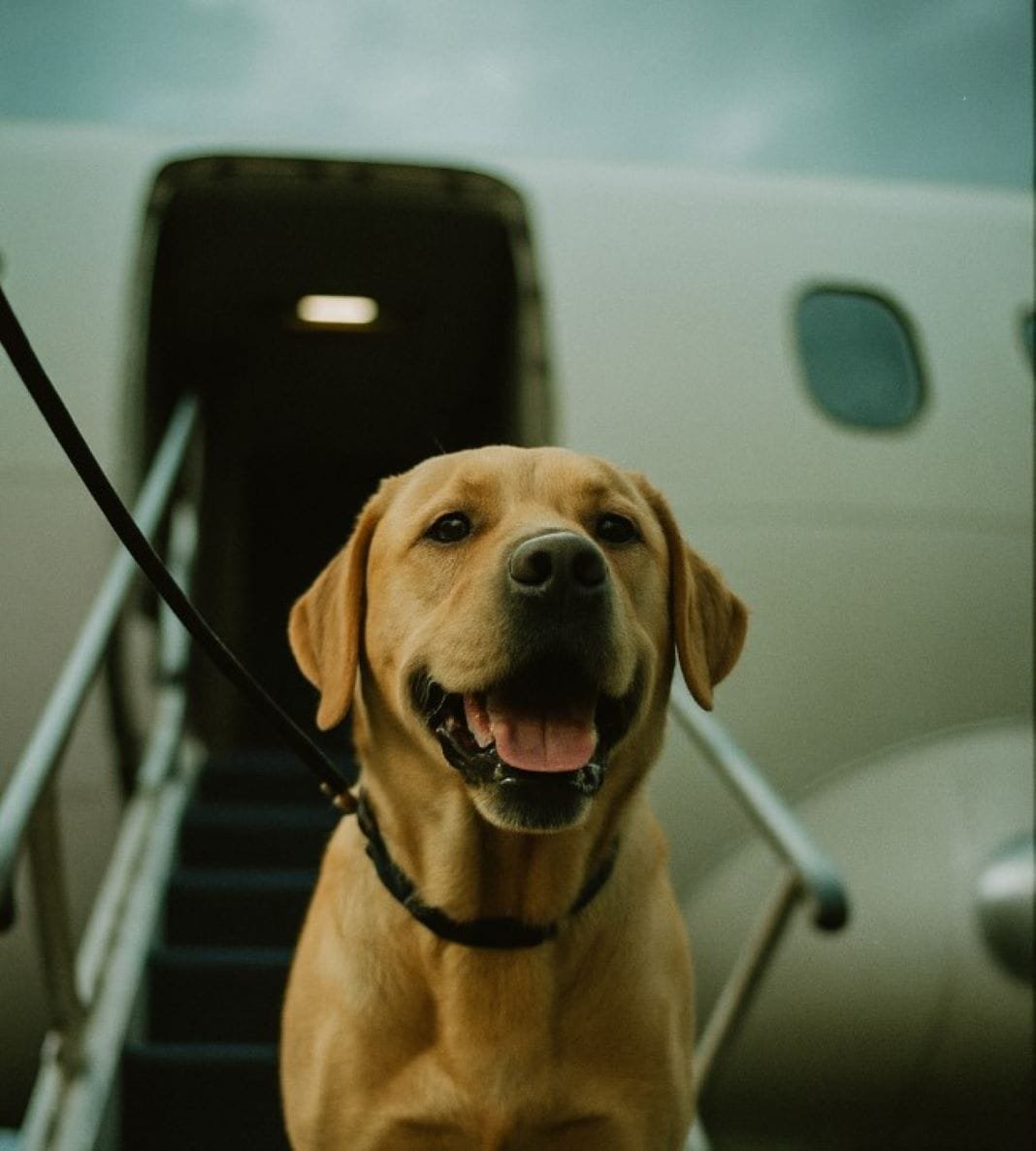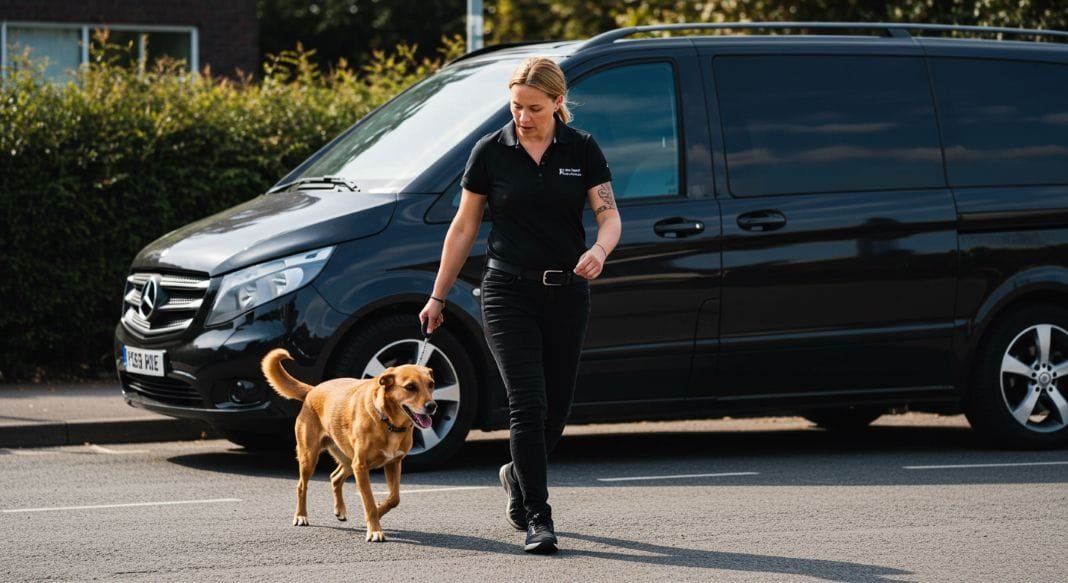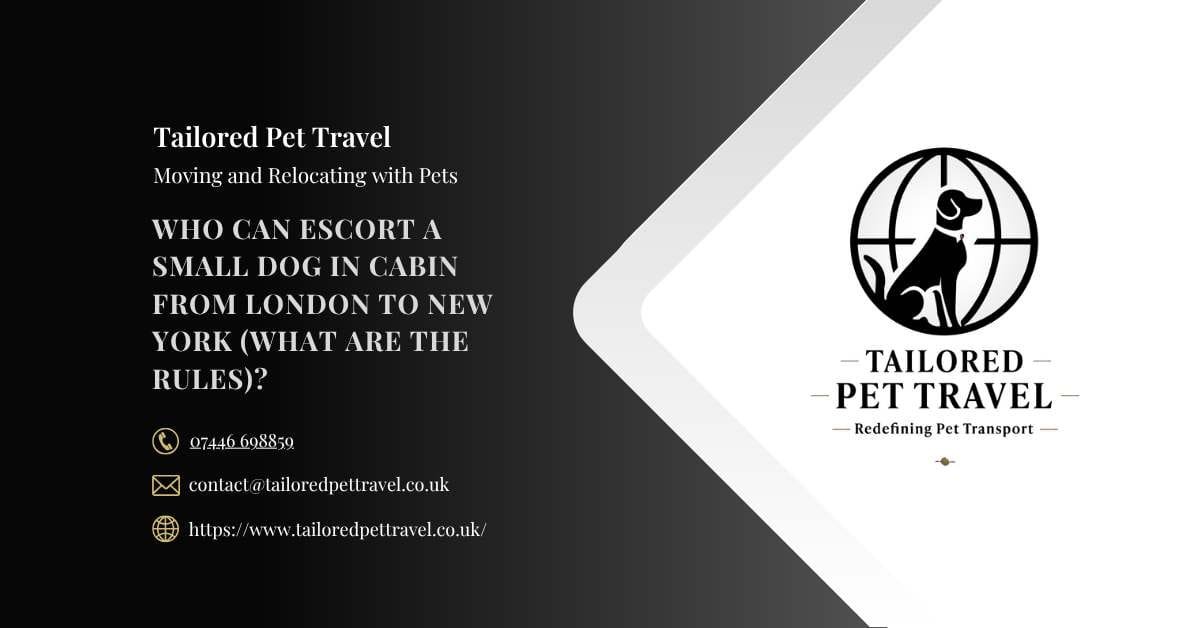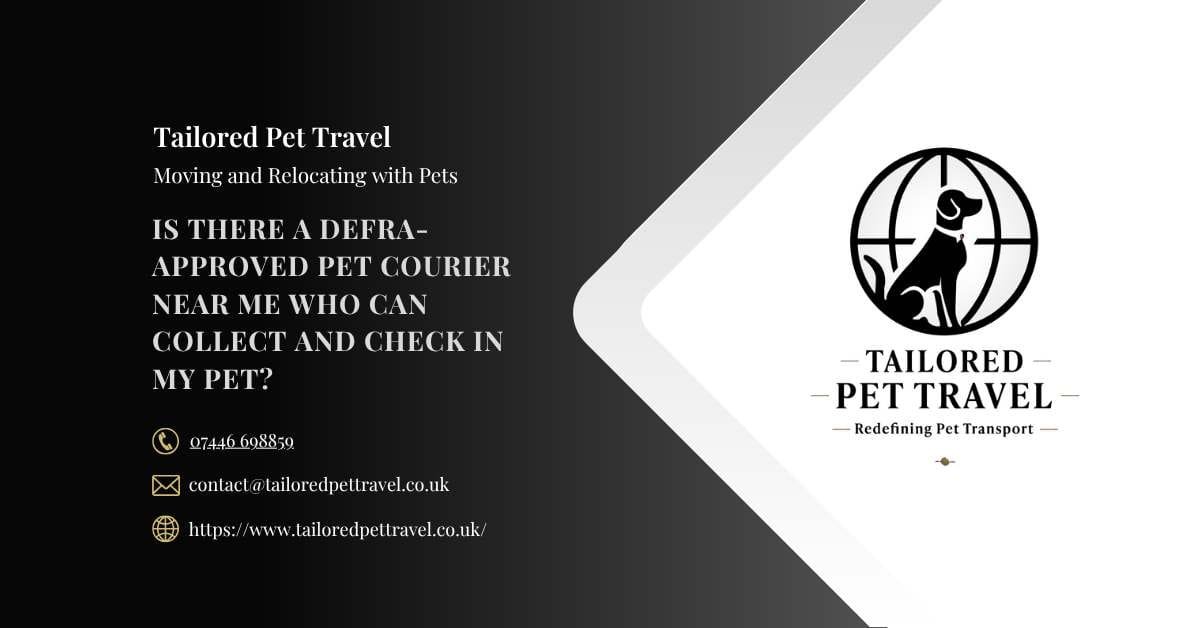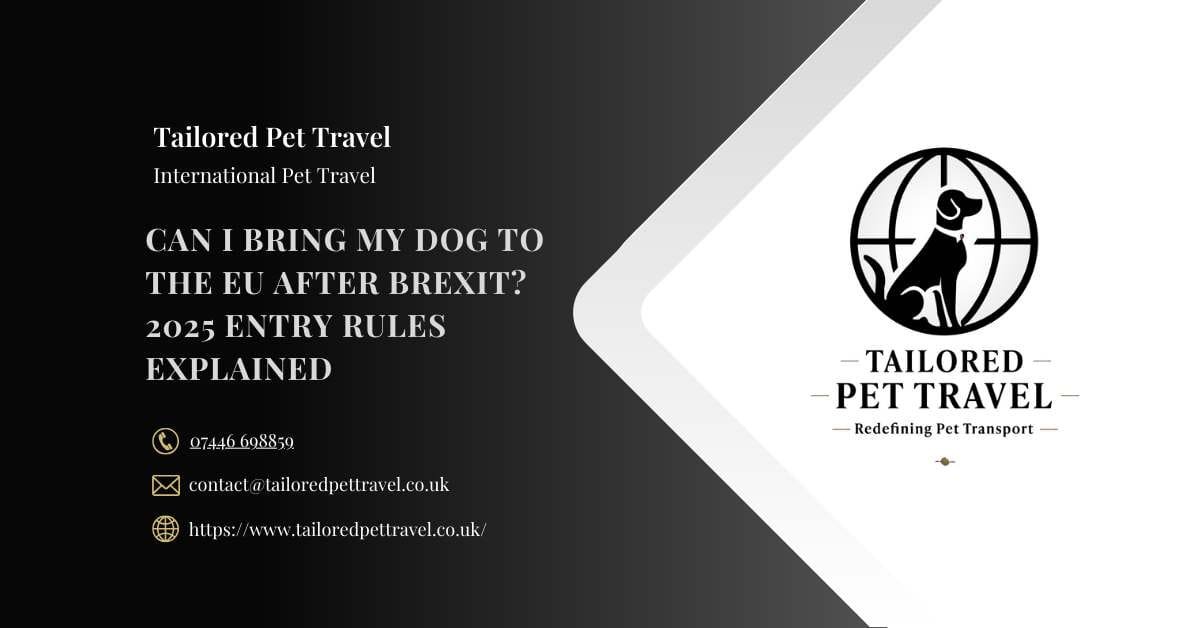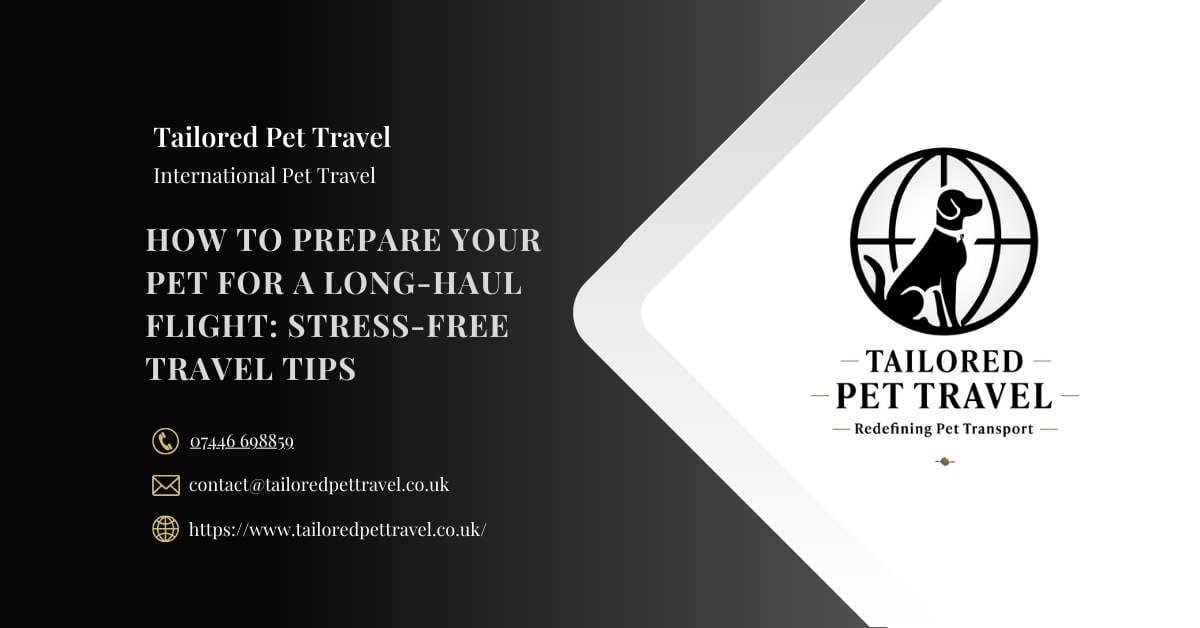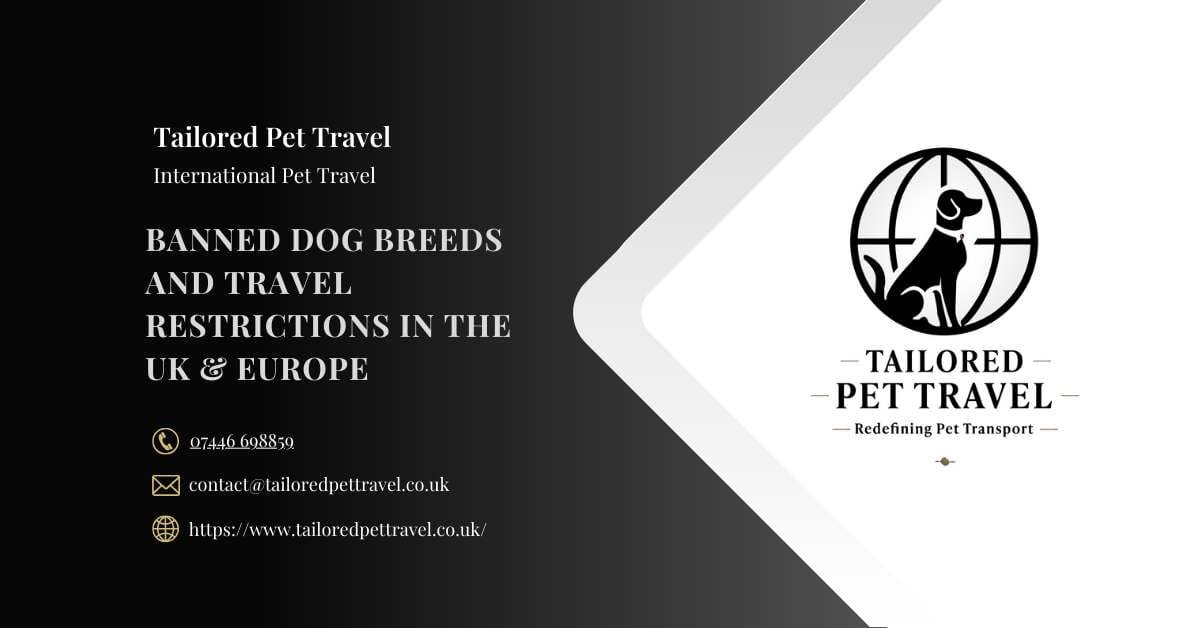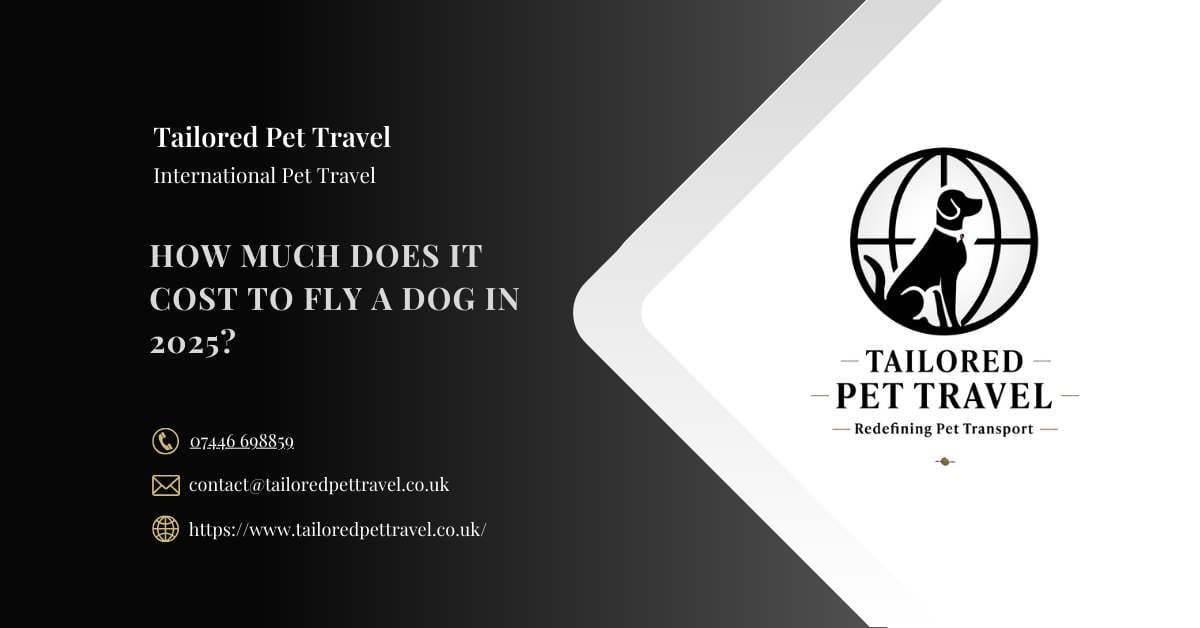Can You Ship Dogs from the UK? What Every Dog Owner Needs to Know
Yes, you can ship dogs from the UK both domestically and internationally, provided that strict animal welfare regulations, airline rules, and destination-specific import laws are met. With professional assistance from certified pet travel specialists, dog shipping can be a safe, legal and well-coordinated process tailored to your pet’s individual needs.
Here's What We Have Covered In This Article
Introduction to International Dog Shipping
People move for all kinds of reasons. Sometimes it’s work, other times it’s family or the need for a change. Whatever the reason, if your dog is part of your life, they’re part of the move too. At Tailored Pet Travel, we support dog owners across the UK with a full pet relocation service. From helping you choose the right crate to making sure your dog settles in after the flight, we’re with you from start to finish.
We handle the details, so you don’t have to worry. Whether your dog is travelling alone to meet you abroad or moving with your whole family, we make sure everything goes to plan. We also help breeders, rescuers, and owners of show dogs transport their dogs safely to new homes around the world.
Is It Legal to Ship Dogs Internationally?
Yes, it’s legal to ship dogs internationally, as long as the rules are followed. These rules exist to keep dogs safe and make sure they don’t spread illness between countries. There are a few different organisations involved:
IATA (International Air Transport Association)
This group sets the rules that airlines follow. They decide what kind of crates dogs need and how they should be handled on flights.
DEFRA (Department for Environment, Food and Rural Affairs)
DEFRA is the government body that makes the rules in the UK. It says pet transport companies need to be licensed and trained to move animals safely.
IPATA (International Pet and Animal Transportation Association)
This is a worldwide group of pet shipping experts. Members agree to follow high standards and share good practice.
USDA (United States Department of Agriculture)
For dogs going to the US, the USDA checks that the dog is healthy and has the right paperwork.
Some countries also have their own rules. Australia, New Zealand, and Singapore, for example, all ask for blood tests and have quarantine periods. Others need import permits or extra vaccinations. Airlines can also set their own rules, especially for certain breeds.
At Tailored Pet Travel, we check every detail before the flight is booked. That means your dog won’t get turned away at the airport, and everything runs smoothly.
Understanding Dog Shipping Costs
How much it costs to ship a dog depends on lots of things. These include the size of the crate, the airline, where the dog is going, and whether they need special care or paperwork.
What Affects the Cost?
-
Crate Size
-
Destination
-
Breed and Needs
-
Vet Work
-
Quarantine and Permits
We explain every part of the quote so you know what to expect. From flight booking and crate hire to veterinary work and customs support, we’re upfront about it all.
Choosing the Right Transport Method
Most dogs fly as cargo in an airline’s pet hold. This is a separate, climate-controlled area of the aircraft designed for live animals. It’s pressurised and temperature regulated, just like the passenger cabin.
Smaller dogs might be able to fly in the cabin on some international routes, depending on the airline. However, this isn’t always the safest or most practical choice.
We also arrange ground transport across the UK and into Europe. This option works well for elderly dogs, brachycephalic breeds, or dogs not suited to long flights.
We’ll advise you on the best method based on your dog’s breed, health, and destination.
Preparing Your Dog for Travel
Crate training is one of the best ways to reduce your dog’s stress during travel. A familiar crate helps them feel secure. Begin with short sessions at home, slowly building up the time.
Feed your dog about four hours before travel. Avoid overfeeding, especially on the day of the flight. Make sure they have been walked and have had a chance to go to the toilet before they’re handed over.
Avoid using sedatives. Most airlines won’t accept dogs that have been sedated, and it can be dangerous for them at altitude. Instead, use safe calming aids like Adaptil or talk to your vet for tailored advice.
How to Select the Right Crate Size
A properly sized crate is essential for your dog’s comfort and safety. Your dog should be able to stand, turn around, and lie down comfortably. A crate that’s too small can be distressing, and one that’s too large can lead to injury in turbulence.
We’ll ask you for measurements of your dog when standing naturally. For some breeds or larger dogs, we may recommend a made-to-measure wooden crate built to IATA standards. These offer more space and are better suited to long-haul travel.
Dog Health and Veterinary Requirements
All dogs must have a fit-to-fly certificate issued by a qualified vet, usually within ten days of travel. Most countries require proof of rabies vaccination. Some destinations have additional rules like worming treatments, rabies blood tests, or import permits.
We’ll guide you through every stage of the vet preparation process. Our team works with experienced vets who know what’s needed for international pet travel.
Travelling with Senior Dogs or Puppies
Senior dogs can fly safely with extra care. They may need wider crates and thicker bedding. We make sure everything is tailored to support comfort and mobility.
Puppies must be at least ten weeks old and fully vaccinated. Some airlines require them to be older. We’ll confirm the requirements based on your travel date and route.
Brachycephalic (Snub-Nosed) Dog Travel Considerations
Snub-nosed breeds like pugs, French bulldogs and boxers often require special planning. These dogs are more prone to breathing difficulties and can struggle in hot or humid environments.
We use larger, ventilated crates and only book flights on routes and airlines with good reputations for handling these breeds. In warmer months, we may recommend ground transport or winter travel where needed.
Pet Entry, Customs and Quarantine Regulations
Every country has its own entry requirements. Some countries like Australia and New Zealand have mandatory quarantine periods. Others need import permits, customs clearance fees, or additional vet checks.
We manage all the documentation and timing to make sure your dog clears customs without delay. Our agents on the ground help smooth the process and support you from the moment your dog lands.
Travel Insurance for Dogs
Travel insurance for dogs can cover unexpected vet fees, flight delays, or missed connections. Some policies include loss or damage of travel crates and assistance with rebooking if your plans change.
We’ll help you find reliable pet insurance providers who offer cover for international travel.
Post-Arrival Support for Shipped Dogs
Once your dog arrives, it’s important to give them time to adjust. Most dogs settle within a couple of days. Familiar items like bedding or toys from home can help them feel safe.
We stay in touch after arrival and can help you find a trusted vet, groomer, or dog walker in your new area. If your dog needs a follow-up health check, we’ll point you in the right direction.
Trust Factors in Choosing a Pet Shipping Company
When choosing a dog transport company, look for proven experience, verified reviews, and membership with IPATA, IATA, or DEFRA registration.
Tailored Pet Travel is trusted by vets, breeders and families across the UK. We offer complete transparency, keep you informed every step of the way, and make sure your dog is treated like one of our own.
Real Case Studies: Dogs We’ve Shipped Worldwide
-
Molly the Beagle flew from Manchester to Toronto, greeted by her family with her favourite toy in tow.
-
Rocky the German Shepherd travelled from London to Perth in a bespoke crate built for his size and comfort.
-
Hugo and Bella, two rescue Staffies, made the move to Spain via our road transport partners and settled in their new garden within hours.
Frequently Asked Questions About Shipping Dogs
Can I sedate my dog for the flight?
No. Sedation is unsafe for air travel and most airlines will not allow it. Calming aids or sprays are a safer alternative.
What is the safest way to ship a dog?
Air travel in the pet hold is the safest and most common method. Ground transport is best for shorter trips or snub-nosed breeds.
Will my dog be scared?
Some dogs may be unsettled at first, but crate training and familiar smells help them feel calm.
What’s the minimum age for puppies to travel?
Ten weeks is the minimum for most airlines. They must also meet vaccination requirements.
How far in advance should I book?
Ideally, start planning at least 6–8 weeks ahead, especially if your destination has strict entry rules.
Why Tailored Pet Travel is the Safe Choice
We know that moving your dog is about more than just logistics. It’s about trust. Our team cares deeply about each dog in our care. We use trusted routes, approved carriers, and take the time to make sure every detail is right.
From first call to safe arrival, you’ll have a named contact you can reach at any time. If you’re planning to ship your dog abroad, speak to us for honest advice, transparent pricing, and complete peace of mind.



